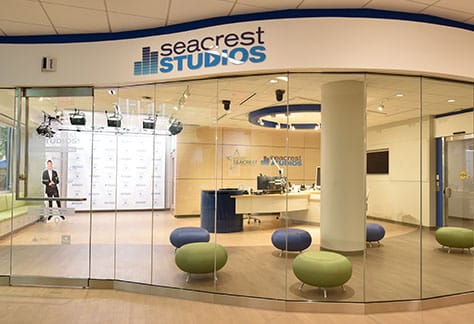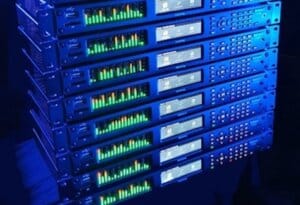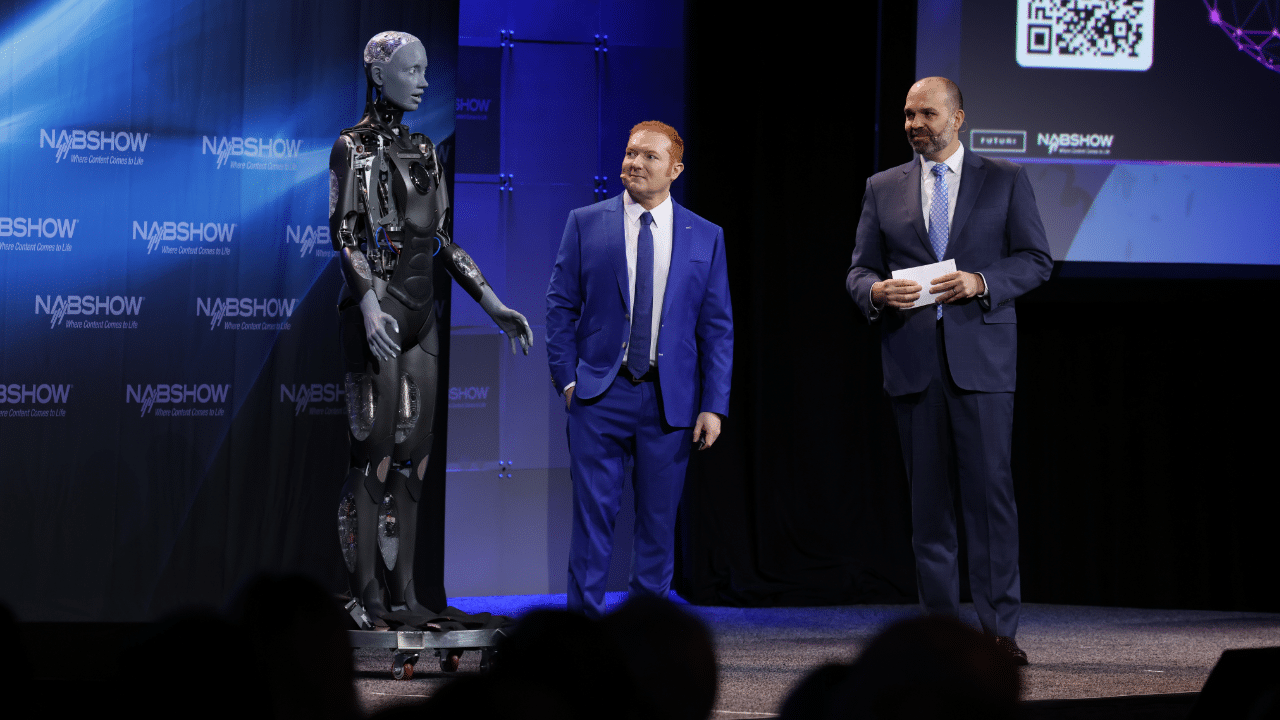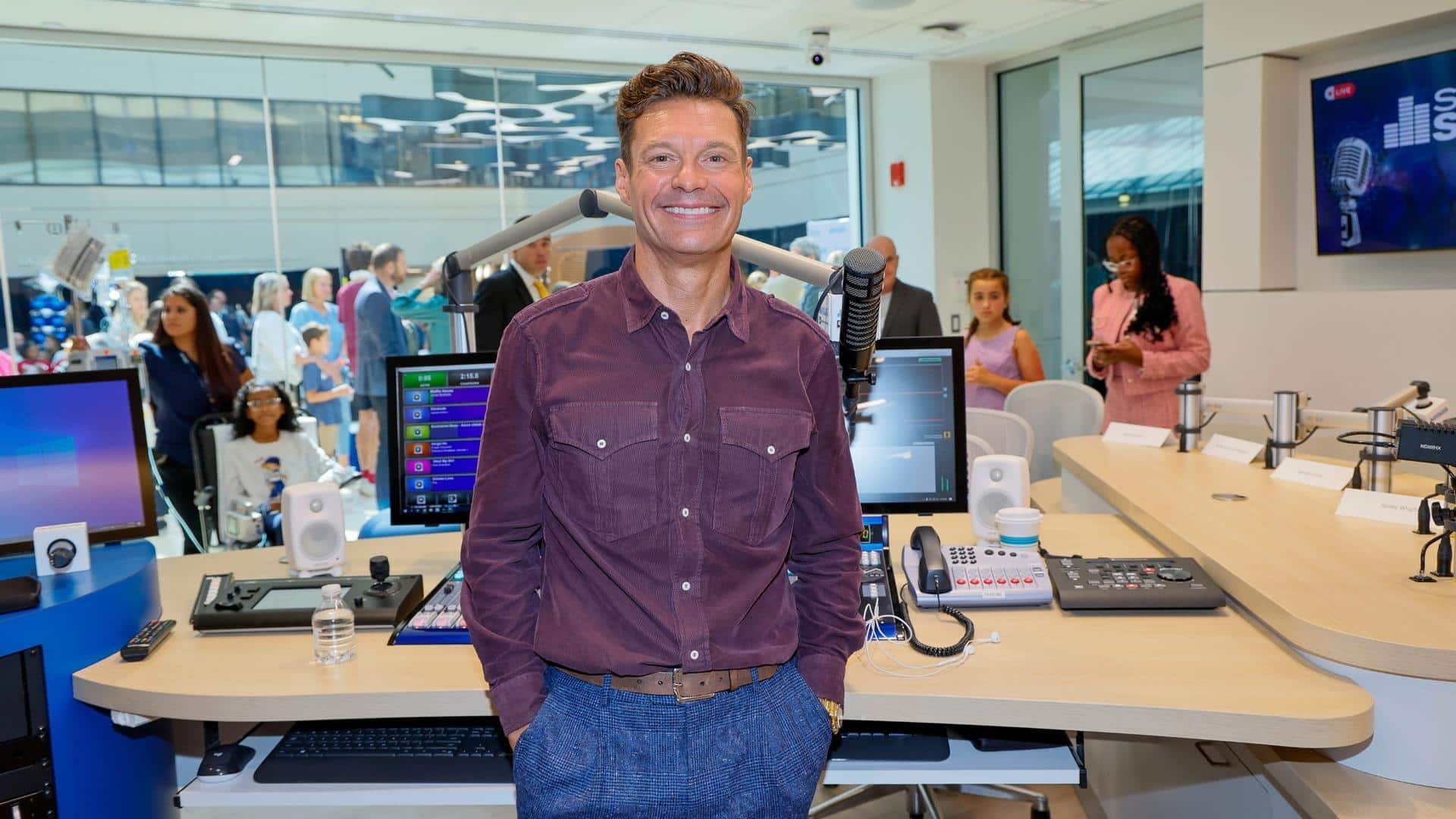
NASHVILLE, Tennessee — When the Ryan Seacrest Foundation opened its first Seacrest Studio in 2010, the Seacrest family didn’t realize the impact it would have. Ten years later, on Dec. 2, 2020, they cut the ribbon for their 11th studio.

The latest Seacrest Studio is a 1,200 square-foot state-of-the art broadcast media center at Orlando Health Arnold Palmer Hospital for Children. It’s centrally located in the hospital and enclosed with floor-to-ceiling glass walls, giving patients and visitors a clear view of what’s happening inside.
Vibrantly decorated and filled with the latest broadcasting technology, Seacrest Studios are built to be a haven for patients to explore, create and have fun.
Studio programming is broadcast via closed circuit networks at each respective hospital. So whether they are physically in the studio, observing from the hallway, watching on an in-room TV or connecting via a tablet or mobile cart, patients have easy access to the offerings.
The Seed
The idea to build a multimedia center inside a children’s hospital began over a family dinner. Seacrest had done several celebrity visits to children’s hospitals but wanted to make a bigger, longer-lasting impact. So he decided to build a place for patients and their families that provided a positive distraction during their medical journey.

The Seacrest family (Ryan, father Gary, mother Connie, sister Meredith), banded together to form the Ryan Seacrest Foundation in 2009. RSF is dedicated to “inspiring today’s youth through entertainment and education focused initiatives.”
Through the broadcast media centers built in pediatric hospitals, patients get to explore the creative realms of radio, television and new media, giving them a positive experience during their hospital stay.
Today, RSF is run by the Seacrest family and three additional staff members. The team is small, but their reach is enormous.
To build the first studio inside Children’s Healthcare of Atlanta, Seacrest’s idea was to somewhat duplicate his own studio in Los Angeles. He called upon Brian Clark, the engineer who was responsible for making sure the local and travel broadcasting setups for his syndicated radio show were on par at the time.
The Studios

Because of Clark’s 20-plus years of broadcast engineering experience, he had a wide network of contacts in the industry. One of the early partners in the project was Broadcasters General Store. BGS and Clark worked to get as many components as possible donated from various vendors. Other companies gave them generous discounts on the equipment to finish outfitting the studio.
They were able to open the Atlanta studio on Nov. 5, 2010, and a second studio inside Children’s Hospital of Philadelphia on July 15, 2011.
Studio planning begins with the Seacrest family visiting the potential site. Subsequent tours of the location are conducted virtually — a standard process even before the COVID pandemic.
Clark then starts with a core template. Each studio generally houses six Electro-Voice mics, a BSI OpX automation system for music, JVC or NewTek video switchers, three JVC robo cams, a handheld camera, an Ariane Sequel audio processor and a Bluray player. In addition, there are accompanying Yellowtec mic arms, Genelec monitors, SAS consoles, Comrex phone systems and a variety of Omnirax furniture and structures.
Individual studios can then be customized for particular specialties. For example, music-centric Nashville was outfitted with acoustic setups to support their guest performers. Denver’s studio manager is particularly interested in video, so their equipment favors video production.
The Gear

When specifying gear, Clark says he likes to project out at least five years, looking for things with longevity and upgrade potential.
Clark works with a foundation-selected integration team to build out each studio, allowing two weeks to get the furniture and equipment in place.
Unlike a traditional radio and TV broadcasting space, a Seacrest Studio needs more square footage. In addition to providing room for talent visits and activities, there needs to be space for patients with extra medical equipment to maneuver. It’s also essential that desk and mic setups be accessible for users with different needs.
Seeing the studios in use offers the greatest lessons on how to improve on design, RSF explains. Every two years, studio managers are invited to gather at a three-day Seacrest Studios Summit, where in addition to educational opportunities, they discuss with the foundation what works or doesn’t work, and their future goals. Clark also continuously investigates new options for improving the studios.
New Technologies

The foundation is working with Poly, whose primary market is corporate, financial, government or medical centers. But with its technology, which Poly donates to RSF, patients can go on virtual tours of museums and zoos, as well as enjoy movie premiers and special screenings.
A few years ago, the studios were outfitted with Leightronix equipment, giving presenters the option to pre-record programming to air during off-hours. And today, during this time of social distancing, Blackmagic’s Web Presenter helps the studios manage remote guests.
The Orlando studio is the first Seacrest Studio to be all digital, supported by Dante. Clark notes that losing the need for wired connections has made things a lot easier, not only on the engineering side (clean racks!), but also in keeping the areas obstacle-free for users.
He adds that a future goal is to move automation to the cloud. He says he’s eyeing RCS’ Zetta Cloud, and is waiting for a version that includes the ability to control complex functions.
Once a Seacrest Studio is launched, the day-to-day operations are managed by hospital staff, with the support of local volunteers, interns and the patients themselves. RSF continues to support the studios with 24/7 engineering consultation, annual contributions and studio upkeep.
Each studio produces 25–40 hours of live programming per week to keep the audience engaged and entertained.
In addition to the programs put on by hospital staff and special guests, the young patients have the opportunity to play an active role in the content. They are invited into the studio to host their own radio and TV shows, watch live musical performances, play games and even interview celebrity guests.
For those who can’t get to the studio, they can call in from their room phones, send messages or remote in via Zoom to participate.
Interns
The mission of the foundation includes another one of Seacrest’s passions — education.
Seacrest took up radio as a hobby when he was young, but his broadcasting career officially began when he was a teenager, when he landed an internship at WSTR(FM) in Atlanta. Today, he crisscrosses the world to perform in his various roles as radio/TV host, producer and spokesperson. And, of course, he is very much involved with the foundation.

Because his path began with an internship, Seacrest is dedicated to opening up avenues for today’s youth to pursue their dreams in broadcasting. Each studio has an internship program that brings in local college students to actively participate in the running of the studio. The interns learn how to operate every piece of equipment, produce shows, edit audio/video, interview talent and facilitate activities.
When they finish their internship, they leave not only with a wealth of practical experience in the industry, but also with full hearts, having made an impact in a lot of children’s lives.





















